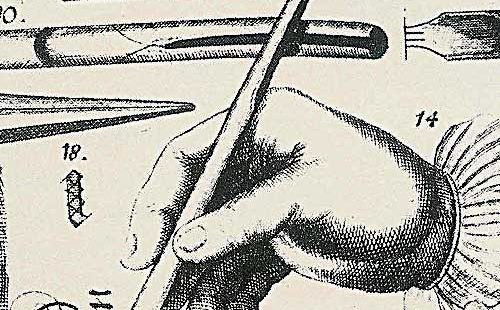Stylus
Back in ancient times, the stylus was the writing utensil of choice. Generally made of metal or bone, this long pointy tool was used to incise letters (often cuneiform) into tablets which were covered in a thin layer of wax or clay.
Today, a stylus can also refer to a pen-shaped device used to input drawings or notes into a computer, tablet, or smartphone.


















